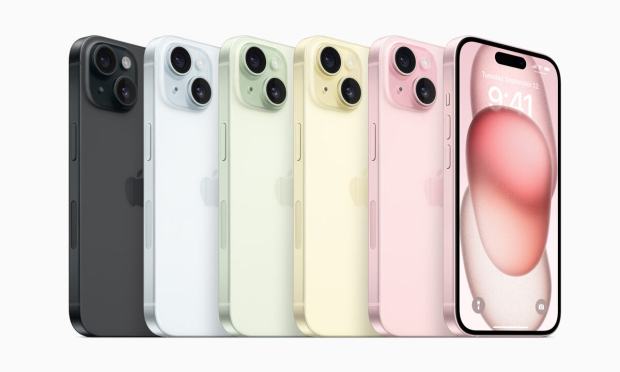Apple Hopes New Hardware Will Up Payments and Connected Healthcare Adoption

Apple’s latest launch event has unveiled a fresh collection of tech.
Tuesday’s (Sept. 12) new product announcements had as their centerpiece the latest iterations of the iPhone 15, the iPhone 15 Plus, the iPhone 15 Pro and the iPhone 15 Pro Max, along with the Apple Watch Series 9.
There were several notable details. For the phones, there’s USB-C charging. For the Watch, they are carbon neutral and have an expanded battery life.
The iPhone 15 Pro’s pricing is the same as had been seen last year, at $999. However, the iPhone 15 Pro Max will set consumers back $1,199, up $200 from the same time frame last year.
Apple also noted that users can use the cameras to create three-dimensional videos, which can be watched via Vision Pro, Apple’s virtual reality headset.
The company’s Watch also features a “double tap” functionality, allowing users to interact with the smartwatch without having to touch it. When users touch their thumb and index finger together twice, sensors detect the movement and enable users to perform an action. These sensors can also monitor users’ heart rates and track blood flow.
Watching One’s Health
As we noted here, there’s a growing interest in, and use of, connected devices through which we track the progress of everything, from steps walked to our vitals to getting reminders about prescriptions. PYMNTS’ own data show that a significant percentage of consumers use digital channels to monitor their health data on both a daily (26%) and weekly basis (11%).
Though payments were not specifically part of the Apple event, the latest refresh of the tech giant’s line of hardware, and the emphasis of making the devices a bit easier to navigate, emphasizes the connectivity of various endpoints.
That connectivity is a key part of a cycle that gives further momentum to digital payments, which would include Apple Pay.
Our recent global survey of the ways consumers are conducting daily activities on their devices shows that there’s been a 29% growth in the year-over-year usage of digital wallets, a pantheon that includes Apple Pay.
There’s certainly room for growth, as Apple Pay captured only about 2.4% of in-store transactions, as PYMNTS estimated last year.
More recently, Apple’s roughly 8% growth in services-related revenues in its most recent quarter is a nod to the fact that the Big Tech firm is looking to the broad range of media consumption, content creation and subscriptions as revenue generators.
The recent debut of Apple Pay Later may make the price tags of the devices — and the aforementioned price increase on the higher end iPhone — a bit easier to swallow. It will remain to be seen whether the new iterations of the company’s flagship hardware offerings will help set the products-related sales line items which were down 4.7% in the latest quarter.

